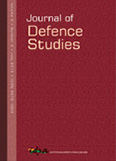The Battle of Imphal: March–July 1944
The year 2014 is the 70th anniversary of the Battle of Imphal. To mark the occasion, this article looks at who fought it; how and where the fighting unfolded in Manipur; how it was a battle fought in the air as well; and the link with the INA and the Chindits. It also notes the many reminders of the Second World War in Manipur today and concludes with a brief overview of the state’s overall experience of the war. The article aims, in effect, to introduce the reader to the Battle of Imphal, an extraordinary event in India’s history that has received little to no attention till date.
- Hemant Singh Katoch |
- July 2014 |
- Journal of Defence Studies




